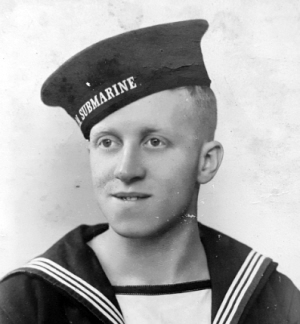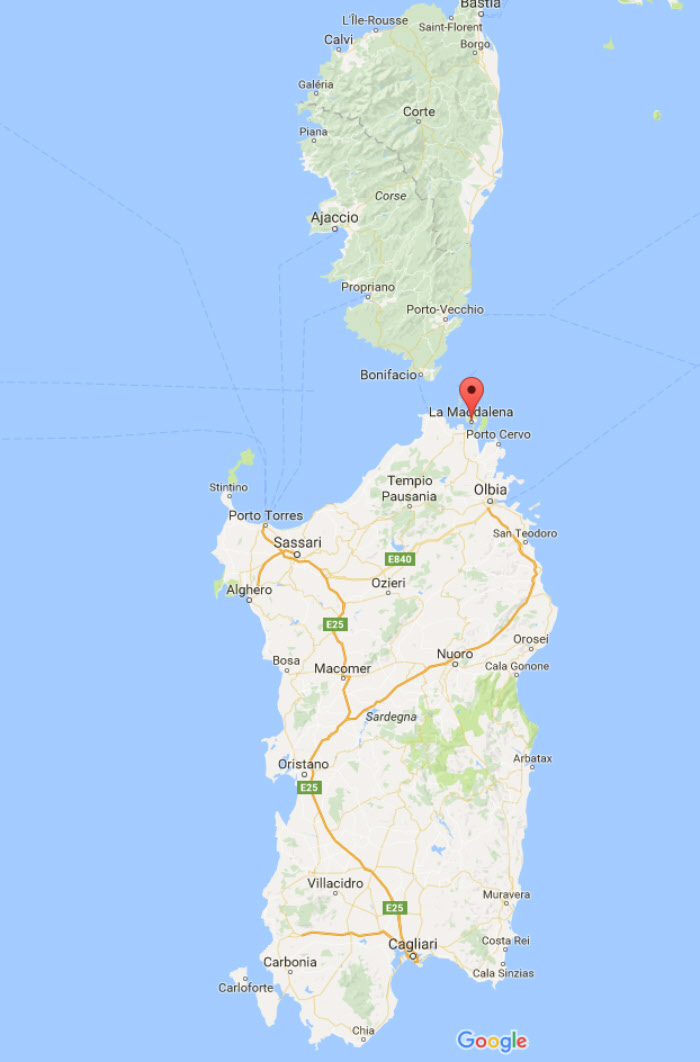
Leonard Auty was born on the 23rd September 1916, the son of Harold Auty and Sarah Ashton, who were married in the Summer of 1909. In 1911, the couple were living with their one year-old daughter, Elsie, at 5, Jack Lane, Hanging Heaton, Dewsbury. Leonard’s father, Harold, born in Dewsbury on the 20th February 1885 was 25 years old and working as a rag grinder for a blanket and rug manufacturer.
Sarah Ashton was 20 years of age at her marriage, born at Flushdyke on the 19th April 1890 and baptised at Ossett Holy Trinity Church on the 1st June 1890, the daughter of Joseph Burton Ashton, a Flushdyke machine broker. In 1901 Sarah was living with her father, by then a grocer and shopkeeper, and mother, Elizabeth, at Ashton’s Buildings, Flushdyke, Ossett.
In 1939 Harold Auty, a sweets salesman, was living at Station Road, Thornes, Wakefield with his wife Sarah and two of their children, Arnold, born the 15th January 1914 and Leonard, now aged 22 years, who were both working as textile operative rag grinders.
Shortly afterwards, Leonard Auty married Annis Elizabeth Jackson in late 1939 or early 1940 in the Spen Valley area which was then the registration district for Ossett. The couple had a son, Geoffrey born in late 1941 in the Dewsbury area. Annis was born in Ossett in spring 1906, the third and the youngest daughter of ten children born to Alfred Henry Jackson, a carting agent, and his wife Elizabeth. Sadly four of the children died before April 1911. In that year the Jacksons were living at 1, Vicar Lane, Ossett with their six surviving children, who were all born in Ossett.
Following Leonard’s tragic death, Annis Elizabeth, never re-married and died in the Dewsbury area in August 1990, aged 74 years. Leonard’s mother, Sarah, died in 1949 and his father, Harold Auty, died in 1954.
24 year-old Leonard Auty joined the Royal Navy in December 1940, after a career working in the textile mills in and around the town of Ossett. Perhaps he thought serving his country with the Royal Navy would bring a life of excitement and adventure, which was infinitely better than the grindingly long hours in the filth and dust of Ossett’s textile mills? We shall never know, because Len Auty never got to see his son Geoffrey growing up, and, for 73 years, the whereabouts of P311 and Able Seaman Leonard Auty has been a mystery. That is until the summer of 2016. In late May 2016 the Royal Navy announced that it was investigating a submarine wreck found close to Tavolara Island, off the coast of Sardinia by diver Massimo Domenico Bondone on the 21st May 2016, which Bondone had identified as P311.
Able Seaman Leonard Auty opted for one of the most dangerous roles in the Navy by volunteering as a submariner. In 1942, with 70 other crew, he was serving aboard the unnamed T-Class submarine P311, which disappeared without trace in early 1943 in the Mediterranean Sea. HMS P311 was the only boat of her class never to be given a name. She was to be assigned the name “Tutankhamen”, after the Egyptian pharaoh. She would have been the only vessel of the Royal Navy, before or since, to bear the name, but was lost before this was formally done.
P311 was a Group 3 T-class boat, with diesel-electric engines, built by Vickers-Armstrong at Barrow-in-Furness and commissioned on the 5th March 1942 under the command of Lieutenant R.D. Cayley. P311 was unusual in that she was fitted with three Chariot human torpedoes, but carried no Oerlikon 20mm anti-aircraft gun. The Chariots themselves were approximately the same size as a torpedo and carried a powerful explosive charge. These underwater vehicles were piloted by two divers, who would position the chariot very close to the target ship, then allow it to complete its run whilst they escaped to safety.
P311 left home waters in Scotland and joined the 10th Submarine Flotilla at Malta in November 1942, and was lost with all hands between the 30th December 1942 and the 8th January 1943 whilst en route to La Maddalena, Sardinia. It was her first mission, a very difficult one, almost suicidal. The goal was ambitious: to reach the port of La Maddalena to hit two Italian 8-inch cruisers, the Trieste and the Gorizia using Chariot manned torpedoes carried on the submarine’s casing as part of Operation Principal.
The submarine sent her final received signal on the 31st December 1942, from position 38º10’N, 11º30’E. She was reported overdue on the 8th January 1943, when she failed to return to base. It is presumed that she was sunk by Italian mines when attempting to pass through the Straits of Bonifacio on the approaches to Maddalena on or around the 2nd January 1943.

Above: A picture of T-Class submarine P311 before it was lost.
In summer 2016, the sunken wreck of a British submarine from the Second World War with 71 bodies sealed inside was found by divers off the coast of Sardinia. The P311 submarine mysteriously disappeared 73 years ago in the Mediterranean and was found at a depth of 100 metres near the island of Tavolara by experienced Italian wreck-hunter, Massimo Domenico Bordone. The wreck was found after Mr Bardone noticed an 84-metre long and 80 metre wide object when he researched depths of 80 metres. The wreck was in almost perfect condition, save for a damaged area on the prow from the explosion with the Italian mine.
HMS P311 went missing in January 1943, after making its last contact on New Year’s Eve, along with its crew. The discovery confirms all on board died. The ship sat on the Gallurese seabed, acting as a steel coffin and depriving the crew of oxygen. Experts suggest the inner chamber was not flooded when it sank. “It looks like she probably went down with air sealed inside, meaning the crew eventually died of oxygen deprivation,” Mr Bardone told Italian newspaper, “La Nuova Sardegna.”
HMS P311, it will not be disturbed and the bodies of the sailors will be left to rest on the sea bed, since naval wrecks are considered war graves.
The “Ossett Observer” had this obituary for Leonard Auty:1
“Ossett Seaman Presumed Dead – In January 1943, we announced that Able Seaman Leonard Auty (28) of 524, Dewsbury Road, Chickenley, was missing, and this week a letter has been received by his wife from the Royal Naval Barracks, Portsmouth, stating ‘It is with deep regret that I now have to inform you that it has become necessary to presume the death of your husband Able Seaman Leonard Auty, to have occurred on January 18th 1943. Please allow me on behalf of the officers and men of the Royal Navy, the high traditions of which your husband helped to maintain, to express sympathy with you in your sad loss.
Able Seaman Auty was the youngest of three sons of Mr. and Mrs. Harold Auty, now of 107, Battye Street, Dewsbury, and formerly of The Green, Ossett. His wife (nee Miss Annis Jackson) hailed from Chickenley, and there is one child, a boy 2½ years old. Able Seaman Auty was born in Flushdyke and attended Flushdyke Council School, after which he worked at Jonas Glover’s Mill, Wesley Street; Manor Mill, Ossett; Walter Walker’s, Streetside; Heckmondwike Flock Company’s Mill; and Kaye’s Mill, Dewsbury. He joined the Royal Navy in December 1940, and left home from his last leave on October 27th 1942. When missing he was serving on a submarine.
As a boy, he attended Bethel Chapel, Flushdyke, and after marriage Gawthorpe Church, where he and his wife were keen members of the dramatic society. He has two brothers serving: Arnold in India, with an Infantry Regiment; and Eric with the Military Police in England. He was the youngest grandson of Mr. and Mrs. Joe Ashton, Flushdyke.”

Above: Map showing La Maddalena, Sardinia, the location of the wreck of submarine P311 and Able Seaman Leonard Auty’s last resting place.
Able Seaman Leonard Auty died on the 8th January 1943, aged 26 years and is remembered on Panel 73, Column 3 of the Portsmouth Naval Memorial.
After the First World War, an appropriate way had to be found of commemorating those members of the Royal Navy who had no known grave, the majority of deaths having occurred at sea where no permanent memorial could be provided.
An Admiralty committee recommended that the three manning ports in Great Britain – Chatham, Plymouth and Portsmouth – should each have an identical memorial of unmistakable naval form, an obelisk, which would serve as a leading mark for shipping. The memorials were designed by Sir Robert Lorimer, who had already carried out a considerable amount of work for the Commission, with sculpture by Henry Poole. The Portsmouth Naval Memorial was unveiled by the Duke of York (the future George VI) on 15 October 1924.
After the Second World War it was decided that the naval memorials should be extended to provide space for commemorating the naval dead without graves of that war, but since the three sites were dissimilar, a different architectural treatment was required for each. The architect for the Second World War extension at Portsmouth was Sir Edward Maufe (who also designed the Air Forces memorial at Runnymede) and the additional sculpture was by Charles Wheeler, William McMillan, and Esmond Burton.
The Extension was unveiled by the Queen Elizabeth, the Queen Mother on 29 April 1953. Portsmouth Naval Memorial commemorates around 10,000 sailors of the First World War and almost 15,000 of the Second World War.2
References:
1. “Ossett Observer”, Saturday, June 3rd 1944.